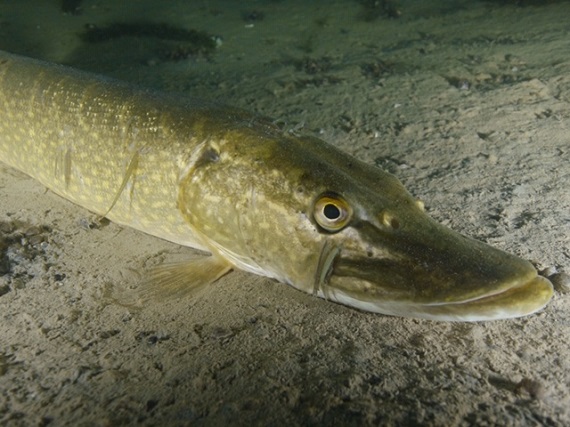Northern pike
Crocodilian predator with sharp teeth patrols lakes up and down the country
The Northern pike, more commonly known as just pike in the UK, is one of our largest indigenous fish species.
Unlike other fresh water fish such as perch or roach, the pike is top dog in its environment, and little bothered by approaching divers. It has two things in its favour: the first is sheer size, which can be up to a whopping 150 centimetres long, although more typically 45-55 centimetres. The second is their formidable set of razor-sharp teeth, which doom any unsuspecting passers-by.
Two things in its favour: size, and razor-sharp teeth
On a dive you may often see pike below in the weeds on the bottom of lakes or rivers, perfectly still and waiting for the moment to strike with the super-quick movement of an ambush predator.
A baby pike is called a jack pike, so look out for these sheltering in weeds and under structures.
The dull-green pike is keen with anglers, although the bony flesh makes allegedly poor eating. It could be their aggressiveness that makes them a target: sport fishermen who enjoy the thrill of trying to land this strong, large fish will be rewarded with an impressive photo. Just stay away from those teeth…
Habitat
- Lakes, reservoirs, inland waterways UK-wide
- Sitting perfectly still on the bottom or swimming gently
Key identifying features
- Long body, dorsal fin towards rear
- Two sets of pectoral fins underneath
- Pointed snout with overbite from lower jaw
Northern pike images
See more pictures of the northern pike in the pike gallery.

VIDEO: Wels catfish
A collection of glimpses, close encounters and near misses with a 6-ft freshwater catfish

5 facts about Conger eels that may surprise you
Look out for the bluey-grey flesh under hull plates and hiding in pipes





